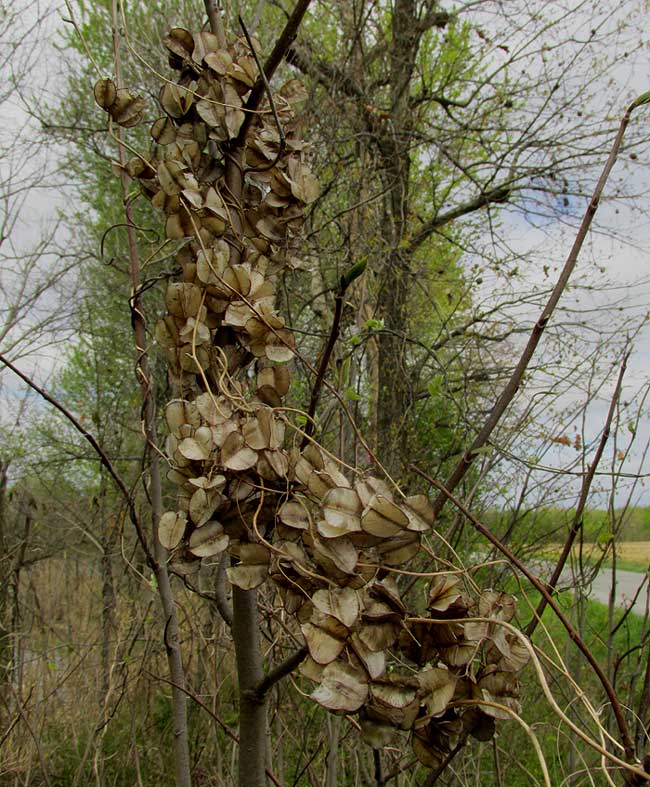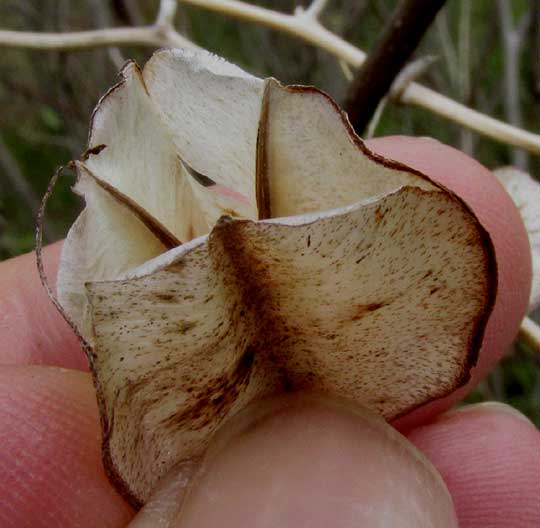Excerpts from Jim Conrad's
Naturalist Newsletter

from the April 19, 2015 Newsletter issued from Calhoun, McLean County, Kentucky, USA
WILD YAM FRUIT CAPSULES
During these super-green days, at woods edges, often you see arm-long clusters of dried-up, papery fruiting capsules on dried-up, herbaceous, viney stems, as shown above.
The capsules are neatly three-winged, and when they're mature they open at their bottoms and seeds fall out, normally six or so in number. Below, you can see a split-open capsule:

This vine is one of several species usually called Wild Yam, also Yam Root, Winged Yam, Colic Root and other such names. It's DIOSCOREA VILLOSA, a member of what's often referred to as the Yam Family, the Dioscoreaceae. That's a monocot family, meaning that it's more closely related to grasses and lilies than to plants like morning glories and maples. This can be a little surprising, since the vine's leaves, when present, are broad and heart-shaped, with veins that aren't parallel with one another, like those of grasses.
With "yam" in its name, you might expect that the vine arises from edible underground parts. That's true, for its tuber-like rhizomes -- rhizomes being horizontal underground stems -- are indeed edible, at least when cooked. However, years ago when I followed some Wild Yam stems to the ground and dug up the rhizomes, I found them to be so small and hard that making a meal of them was out of the question. I read that under cultivation the vine's yams can grow fairly large -- even very large. But wild Wild Yam "yams" found at woods' edges in our western Kentucky bottomlands definitely aren't big ones.
Another name used for Wild Yam is Colic Root, for traditionally the vine was highly regarded as medicinal. The rhizomes contain the compound diosgenin, which is used to manufacture certain steroid drugs such as progesterone, used as contraceptives and against such diseases as asthma and arthritis.